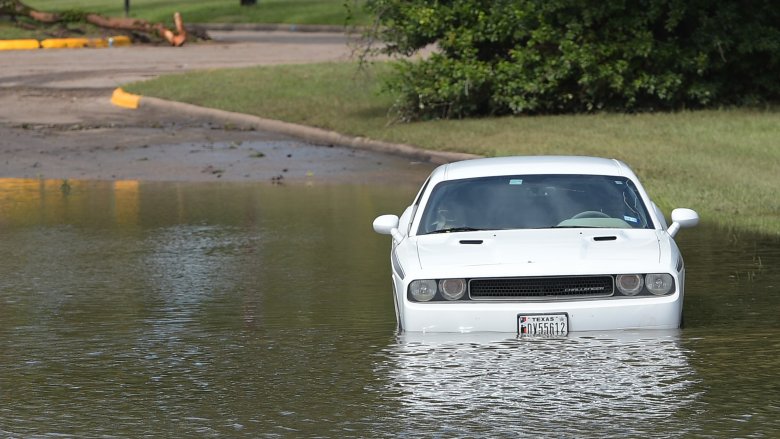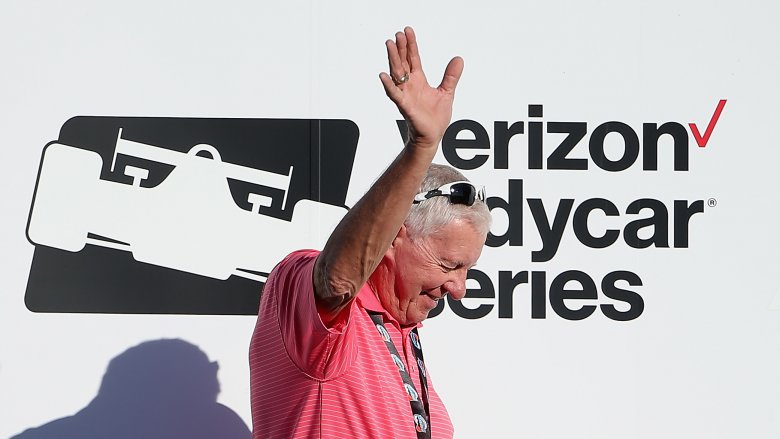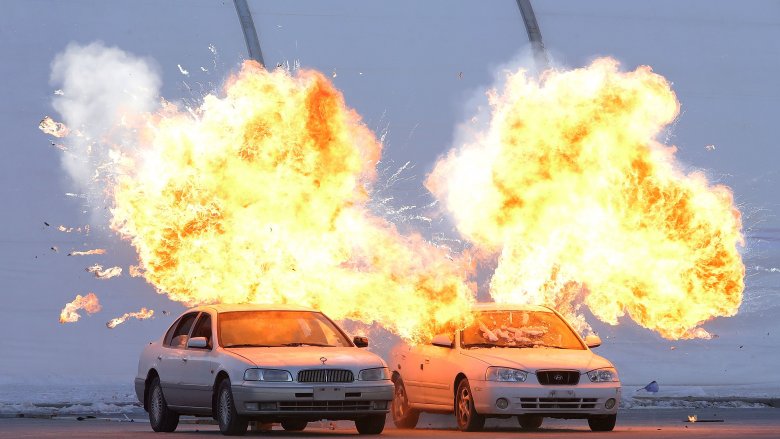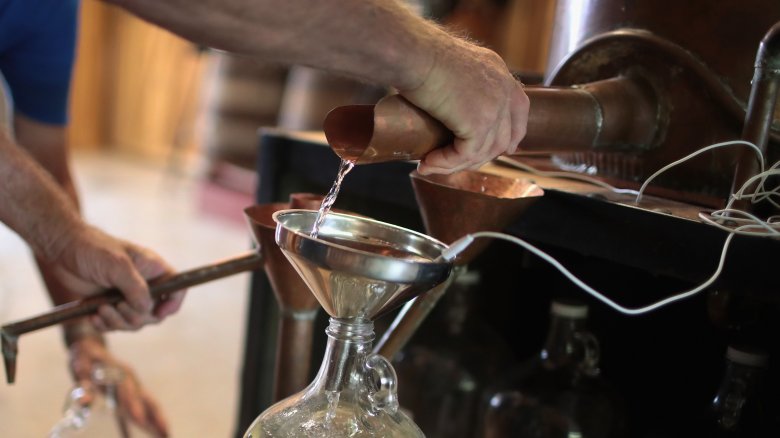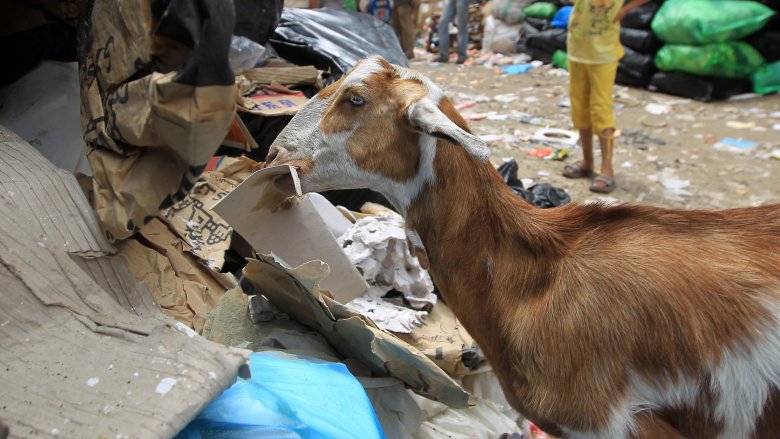Race Car Drivers Who Are Actually Really Weird People
Ah, race car driving. The gasoline-powered sweet science. America's favorite pastime to experience at 200 miles per hour. All the best left turns you could ask for. If competitive sports are an amusement park, then racing is the treacherous-looking Tilt-A-Whirl in the back corner that keeps throwing bolts and washers every time you turn it on. As such, it can attract some really odd ducks. "But how?" you may ask. "How could a world dominated by ludicrously high speeds and repetitive actions attract the quirky, the half-a-bubble-off-plumb, as race car drivers?" Yes, it's a complete mystery.
Be that as it may, over the years, the field of ultra-fast vroom-vrooms and crash-bangs has brought in its fair share of irregular produce, psychologically speaking. It's not a bad thing, necessarily. Some of the world's most interesting people are bananas. Let's take a look at a few of the nutrageous bars who decided they wanted to go fast.
'Tiger' Tom Pistone: King of Atlantis
Retired NASCAR driver Tom Pistone would know a few things about cautionary measures. Pistone says when he started out, he raced on a seedy track run by a man named Andy Granatelli who hired race car drivers specifically to crash the other cars on the course, hoping to give the audience a thrill. Coming from a place of extreme showmanship would be enough to make anyone nervous, but even by those standards, Pistone may have taken things a bit far.
See, in 1960, during a qualifying run at the Daytona Speedway, fellow driver Tommy Irwin lost control of his car and crashed it into Lake Lloyd, the man-made lake at the center of the track. Did he drown? No, he did not. "And neither," one assumes Tom Pistone shouted with his finger pointed heavenward, "shall I."
So during Pistone's race, he drove wearing a life preserver and an oxygen tube. You know, in case the worst happened to him. Even odd ducks gotta float.
Ryan Blaney desperately wants to be a Jedi
As the Star Wars universe continues to expand and slowly envelop everything in existence like heat death scored by John Williams, questions remain that keep many of us awake at night. Questions like "How many parsecs would it take for a stock car to make the Kessel Run?"
For the answer to that, consult Ryan Blaney. He's, well, he's not just a Star Wars fan. He may be the Star Wars fan.
The driver of the Number 12 Penske car has a deep and abiding love of a galaxy far, far away, and it's a light he won't hide under a bushel. The banner art for his podcast, "The Glass Case of Emotion," features an artist's depiction of Blaney as Luke from the poster for A New Hope. He celebrated the release of Rogue One by tweeting a picture of himself posing with a lightsaber and staring into the camera, unashamed. He even attended the red carpet premiere of The Last Jedi, which is basically the Wonka Factory tour of nerdiness.
And in case you were wondering, he disliked that scene where Luke drinks milk out of a space aardvark just as much as you did. Ryan Blaney just loves Star Wars so much, you guys.
Jules Goux is not your role model
There are rules that are easy to take for granted, that we just assume have always been in place. They are the unspoken laws of the social contract: Don't punch the petting zoo animals. No hoverboards on the escalator. Don't down four bottles of champagne while you're driving in the Indy 500. But it's a tragic and — at least in the case of the hoverboard thing — hilarious truth that rules only exist because they have, at some point, been broken.
In 1913, during the third Indy 500 in history, Jules Goux was having a mighty fine day. He was in the lead after only five laps. During a pit stop on Lap 15, he ordered some chilled wine. Records vary somewhat, but historians broadly agree that over the next three pit stops he consumed between four and six bottles of champagne, or roughly four to six more bottles of champagne than a person is supposed to drink when driving a car with no safety features as fast as they can.
The end result? Race car drivers could no longer drink alcohol during races. Oh, and Goux won. By a ridiculous 13 minutes.
Jim Rathmann lied royally
Who hasn't lied on a job application? Who hasn't exaggerated a little bit about their skill set or claimed that they had more experience than they actually had or stolen their older brother's identity and kept it for over 60 years?
Well, maybe that last one is more of a niche category.
The racer you might know as Jim Rathmann fits that niche. When he was young, Rathmann was still going by his given name, Royal Richard Rathmann. Royal wanted to go fast, but age restrictions prohibited him from doing so. So Royal did what any of us would do: According to the Indianapolis Motor Speedway's website, he swapped IDs with his older brother Jim and entered a stock car race. The change stuck, and the newly christened Jim Rathmann debuted in the Indy 500 at 20 years old, and later became an Indy 500 champion and one of the most influential racers of his generation, albeit one with the wrong date of birth listed on his records.
Tom 'The Gasman' Sneva advocates for disappearing
Good luck finding Tom Sneva. The man is a human disappearing act.
You could say the trick goes all the way back to his infamous 1975 crash at Indianapolis, where he opened his magic routine by touching wheels with another driver, turning his own car into an automobile-based variation on the "cut a lady in half" illusion.
It was in that crash that he first started his vanishing act, losing, as Sneva himself told the Indianapolis Star, "a set of lips and a nose ... but they grew back, bigger than ever." Facial features weren't all Sneva wanted to lose that day, though. He wanted his consciousness gone, too. He was later quoted as saying "In a situation like that it's important to talk to yourself: 'Faint, you coward, faint!'"
Today, Tom continues his journey into invisibility. He doesn't own a cell phone or an email address. His reasoning? Then "people can't find you." Five bucks says he never needed an ice pack for those burns. He's plenty chilling as is.
Bobby Unser really wants his $75 back
How far would you go for $75? Probably not as far as Bobby Unser.
In 1996, Unser underwent a harrowing ordeal. He and a friend were out snowmobiling in New Mexico when their vehicles broke down. They battled the elements for two days, essentially embodying the Liam Neeson spirit animal that lives in all humans faced with death by Mother Nature. Then they found a barn and hung out until they were rescued.
When they were rescued, it was discovered they had been snowmobiling in a designated wilderness area, which is a no-no at a federal level. They were charged a $75 fine. No big deal, right? If you go out on a quiet night in the canyons of New Mexico, you might still hear Unser replying with a bellowed, echoing "NO."
Unser fought the fine, which again, was cheaper than some parking tickets, taking his case all the way to the Supreme Court. The Supreme Court declined to hear the case. You'll bounce back, Bobby. Uber is always hiring.
Dale Earnhardt Jr. shoots dead cars
At some point or another, we've all had a special collection of things near and dear to our hearts. Millenials had Pokemon cards. Their parents had boxes of bottle caps and notebooks full of stamps. And with greater financial stability comes the ability to amass more colorful trophies.
Enter Dale Earnhardt Jr. While your standard gearhead might have a project car or two and maybe a shelf covered in Hot Wheels, Earnhardt prefers a more life-sized and objectively weird hobby: He owns a car wreck graveyard, according to USA Today.
Yes, Dale Junior's equivalent to a stack of comic book is a stretch of land called Dirty Mo' Acres, containing dozens of dead race cars. In it, you can find the remains of such vehicles as a Jimmie Johnson #48, Will Power's #12 Indy car, which now resides in a tree, and one of Earnhardt's own #8 cars, which he told NASCAR.com he uses for target practice. No respect for the dead.
Junior Johnson's family gig
A lot of families enjoy the occasional holiday get-together over a couple drinks. If you're like Junior Johnson's family, you enjoyed running an illegal moonshine operation and based your livelihood on cosplaying a shirts-and-skins reenactment of the Volstead Act.
Yep, Junior Johnson's father ran a whiskey still back in the '50s. Junior was a runner, transporting that smooth North Carolina jet fuel from place to place. While he was never caught making deliveries, the future Indy 500 winner was arrested in 1956 at his pa's still when federal revenue agents ambushed him, according to the Associated Press. He was charged with the production of "non-tax-paid whiskey" and spent 11 months behind bars. When he was released, Junior pursued a successful career in stock car racing. They even made a movie out of his story in the '70s called The Last American Hero.
Thirty years later, he was granted a retroactive presidential pardon by Ronald Reagan. Oh, and in 2007, he became the co-owner of a moonshine distillery. But all legal-like this time.
Dale Jarrett basically lived an Aesop's fable about laziness
Dale Jarrett started his career in racing from the proverbial mail room. His father managed a race track in North Carolina and gave a teenage Dale a job running errands and performing menial tasks around the property. One of his chores: cutting the lawn on the makeshift grass parking lot.
Dale, disinclined to spend his days pushing a mower up and down a field, made what we can all agree was his only logical decision: He traded a golf club for a couple of goats and set them loose on the grass. The problem was, the goats weren't into grass. They had more exotic palates. What these goats wanted, you see, was to eat big chunks of cars. You know. Goat stuff.
The animals apparently went wild for the upholstery inside a series of decorative wrecked jalopies left in the lot. According to Dale, they wouldn't eat grass "if you put it in their mouths." We all learned an important lesson here today.
Tim Flock beats Friends to the punch by 40 years
Who hasn't wanted a pet monkey at some point? Tim Flock certainly has. But what separates the greats like Flock from the rest of us? Flock does something about it.
According to Fox Sports, for eight glorious races in 1953, Tim Flock drove with a rhesus monkey named Jocko Flocko as his copilot. What does a monkey do in a race car, you might wonder? You know, monkey stuff. Hop around, probably. Maybe look for ticks. Oh, and find the trap door installed in the floor of the car to more easily spot tire damage, open the door mid-race, and go full Tasmanian Devil inside the speeding vehicle, screaming and tearing at Flock's face.
Flock was less than enthused about this pragmatic style of high-speed monkey shenanigans and retired Jocko at his next pit stop. No solid evidence on where the mad primate wound up, but all signs points to him being in the back seat of your car right this minute, waiting for his moment to strike.
